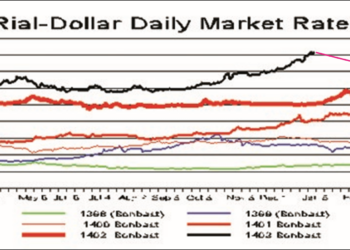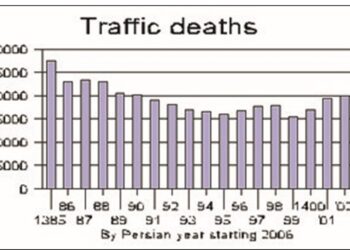February 28, 2020

Living standards in Iran are now about 60 percent higher than in the 1970s before the revolution, concludes an Iranian-American professor of economics at Virginia Tech. But there has been stagnation in the last decade, which he attributes almost exclusively to sanctions, not corruption and mismanagement.
“As I have shown in my blog and in other writings, if properly measured, living standards in Iran are now about 60 percent higher than in the 1970s,” Djavad Salehi-Isfahani said in an interview with the Tehran Times as Iran marked the 41st anniversary of the Islamic Revolution.
Salehi-Isfahani has every now and then criticized the way Iran’s economic development is underestimated by ordinary people, the media, and even economists.
He says by using the wrong metrics, it has been claimed in a BBC Persian report that living standards are now 30 percent lower than before the revolution.
“There is no place that I know where data is more important for clearing things up than in Iran, where many people make comparisons based on hearsay,” says Salehi-Isfahani, who is also a nonresident senior fellow for the Global Economy and Development at Brookings Institution in Washington, DC.
The professor said, “Before the revolution, public policy was urban biased. Rural areas grew but public investment was mainly diverted toward urban areas. As a result, the main source of poverty and income inequality, which was the rural-urban gap, remained unchanged.”
However, he said, after the revolution “poverty reduction became a focus of state policy” and the ruling system shifted its focus on rural development.
As to whether Iranians are better off today than before the revolution, Salehi-Isfahani said the key is living standards. “We know from survey data that in 1972 only 6 percent of Iranian families owned a car, compared to 48 percent today,” he noted, citing a crude statistic.
“But more systemic comparisons are available. To do this, we need to add up all the value of all the goods and services that the average Iranian consumes. This is what GDP accounting does. However, this accounting is complicated by the fact that prices and qualities of goods and services change over time. So, it is critical to correct for inflation, which is done routinely, and to adjust for improvement in quality, which is done less often.
“For a country like Iran, it is also important to adjust for differences in the cost of living. Vast subsidies in Iran, especially for energy, after the revolution do not get counted properly in the accounting of GDP. Subsidies cause Iranian prices to be much lower than in other countries. Most services, such as housing and health, also cost less in Iran than in, say the US, because they are not tradable.“
He continued: “For these reasons, the value added generated by sectors whose products are priced lower than in the US underestimate the level of consumption, and therefore the standard of living, in Iran relative to the US. This is why economists do not use the market exchange rate to compare total value added in different countries. Instead, they use exchange rates that equalize the cost of a standard basket of goods. This is called the Purchasing Power Parity [PPP] exchange rate, which several international organizations compute for all countries, including Iran.
“Unfortunately, many researchers who work on living standards and poverty in Iran do not use PPP rates and obtain very negative pictures of economic growth in post-revolutionary Iran.”
He ridiculed many analyses, such as a BBC Persian report that showed how much gold a teacher could buy before and after the revolution to conclude that living standards had fallen because a teacher could not buy as much gold after the revolution on a teacher’s wages.
“They ignore the fact that gold prices have increased globally, and a similar comparison would suggest, incorrectly, that US teachers’ wages are also much lower than they were in the 1970s,” he said.
He said that using the GDP per capita series in PPP “shows Iran’s living standard rising until 2011 and then it is stagnant.”
As to why it has been stagnant since then, Salehi-Isfahani said, “I do not know of a better explanation for the sudden change in performance of Iran’s economy than sanctions. All other issues that people raise – mismanagement, corruption, etc. – existed before and after. I am not denying that these other problems exist, but sanctions are the most obvious explanation” for the stagnation over the last decade.
After the revolution, he said, “Poverty reduction became a focus of state policy. Chief among the policies was the shift in public investment toward rural areas, mainly under the leadership of the Jahad-e Sazandegi (Construction Jihad). Extension of roads and the electricity network, followed by schools and health clinics, narrowed the rural-urban gap in income and reduced poverty and inequality.
“Later on, starting in 2010, the introduction of cash transfers further reduced poverty, but this reduction was pure redistribution and was in contrast to the policy of rural investment, which reduced poverty through economic growth and without much redistribution.
“Later on, after 2013, inflation sharply reduced the real value of cash transfers and poverty climbed back up, from less than 10 percent to about 15 percent today. The new policy of increased cash transfers will for a while reduce poverty, but without economic growth and more employment it is hard to be very optimistic about long term improvement in the welfare of the lower income families,” Salehi-Isfahani said.













